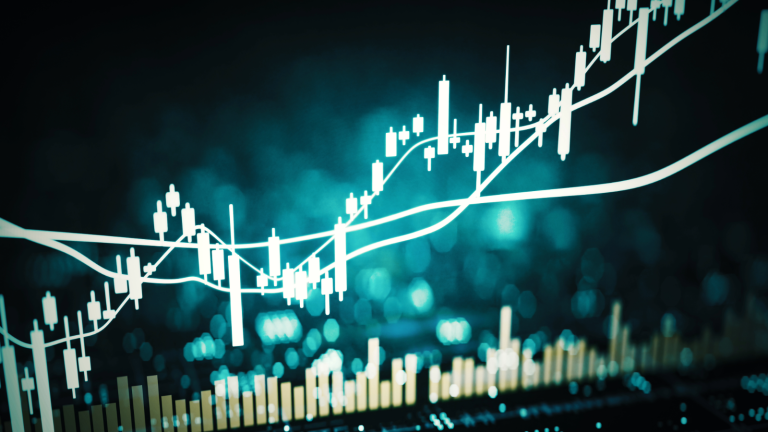Take a look at this chart – it may just change how you think about artificial intelligence…

At first glance, it’s just a timeline of notable AI systems over the years. But buried beneath the surface is a signal most people miss: the number of parameters that each system uses. And that figure is exploding.
As Our World in Data notes, these “are internal variables that machine learning models adjust during their training process to improve their ability to make accurate predictions.”
Think of parameters as the brainpower behind an AI. The more it has, the more nuanced and capable it becomes.
Basically: the more parameters a model uses, the better – and more humanlike – it becomes.
In a way, this chart acts as a portrait of AI’s exponential growth. And we’re not at the end of the curve – we’re at the base of a vertical spike.
Let’s put this in context…
How AI Went from Predictive Text to Project Completion in Just 5 Years
In 2019, GPT-2 struggled to write coherent paragraphs. By 2022, GPT-3.5 could navigate menus faster than a human. Just a year later, GPT-4 cracked problems in seconds that used to take five minutes. Today in 2025, Claude 3.7, Sonnet, and O1 are solving 20-minute tasks in the blink of an eye with an 80% success rate. Meanwhile, OpenAI’s o3 has crossed a new threshold, completing coding problems faster than human engineers.
As this AI Boom continues to unfold, we’re witnessing exponential capability compounding in real time.
We’re just about three years into this new AI-driven era, and the chart is already curving skyward.
Now project that same pace out a few more years…
Instead of working out 30-minute bugs, these models could handle multi-hour, maybe even multi-day, autonomous workflows.
We’re talking about AI that doesn’t just autocomplete your sentence but your entire project.
Agentic AI: The Next Evolution That Works Like a Teammate (or a Threat)
We’ve officially crossed into a new era: that of Agentic AI.
Instead of a model that can offer a clever retort or write its own poem, this iteration of AI can:
- Set goals
- Design workflows
- Initiate subtasks
- Self-correct
- Call external tools
- Track progress
- Report back or even act on outcomes
This is AI not as a tool but as a colleague and collaborator… and perhaps in some domains, a replacement.
These agents will take a vague objective – “launch a product campaign,” “revise the codebase,” “generate a pitch deck,” “run a growth audit” – and complete the task end-to-end.
And it’s already happening. Just look to Meta (META), one of the world’s leading AI companies.
According to a recent Wall Street Journal report, Meta executives say the company’s internal “AI Marketing Engine” can already run A/B tests, generate visuals from brief prompts, and allocate ad budgets dynamically – with plans to replace 90% of manual ad workflows within the next 18 months.
Not just targeting… every single aspect: writing copy, creating visuals, designing campaigns, assigning budget, monitoring performance, generating reports…
That’s a full-on replacement.
A business that once required entire teams of marketers, designers, analysts, and managers will soon be run by autonomous AI agents with prompt-driven brains and reinforcement learning feedback loops.
And you better believe if Meta pulls it off, Alphabet (GOOGL), Amazon (AMZN), TikTok, and every direct-to-consumer brand on the planet will follow.
It’s an exponential economic transformation all powered by AI.
AI in Hollywood: The Death of Traditional Filmmaking?
Let’s tie this to another stunning development we’ve talked about recently: Veo 3, Google’s latest generative AI video model.
A couple years ago, AI-generated videos were meme-tier at best. Distorted faces, jerky motions and transitions… Pepperoni Hug Spot.
Now? AI can create a near-masterpiece from one simple text prompt.
An entire hyper-realistic scene in 1080p – cinematic lighting, lifelike animation, synchronized audio – within just minutes or less.
Right now, clips are limited to eight seconds. But we know how this curve works. First 8 seconds, then 30… a few minutes… and suddenly, we’ve achieved feature-length films.
And combined with what Meta is building in ad automation, it’s not hard to see the convergence:
AI would write the concept; generate, place, and target the ads; evaluate return on ad spend; rework the copy…
All without a single human touching the process.
AI Isn’t a Bubble – It’s an Economic Supernova in Disguise
And yet, we still hear the whispers:
“It’s an AI bubble.” “They’re all chasing a hype cycle.” “Valuations are stretched.”
Folks…
Was the internet a bubble in 1997 just because you couldn’t order groceries from your couch?
Was mobile doomed in 2005 simply because most apps were still clunky, pixelated games?
Were smartphones overhyped in 2010 because the app ecosystem was still in its infancy?
Was the cloud dismissed in 2015 because only a handful of companies had moved their operations there?
No. It was just early. And early looked weird. Then those technologies transformed the world – and we haven’t looked back since.
We’re confident that AI isn’t a bubble. It’s an economic supernova, collapsing entire sectors and replacing them with self-improving, self-acting digital labor. What looks like overhype today will look like underpricing in hindsight.
This is not a top. It’s the setup.
What’s Ripe for AI Disruption
Want to know what industries are likely next?
Start with any job where work is digital, the outcomes are measurable, the tasks are modular, and the process is repeatable.
That’s some 60% of the knowledge economy.
From law firms to marketing agencies, film studios to software consultancies, if you don’t have a plan for autonomous AI agents inside your value chain, you are the disruption target.
Let’s sketch out what the next phase of exponential AI could look like.
Here’s what we expect will soon be possible; even normal…
- AI dev agents autonomously building and deploying apps
- Financial agents managing portfolios based on real-time macro data
- Media agents writing, shooting, editing, and distributing full-length documentaries
- Advertising agents running multi-million dollar campaigns with no human involvement
- Enterprise assistants coordinating departments, running analytics, booking travel, and sending emails
The entire middle layer of operational work will be eaten by AI – not in some abstract future but within the next few product cycles.
How to Invest Before Agentic AI Models Go Mainstream
Of course, humans don’t do 20-minute jobs. We tackle multi-day workflows and hold goals over time. We work across tools and teams, and we evaluate context.
The real disruption happens when AI can do that. And considering its exponential growth curve, it could be only one or two breakthroughs away.
When GPT-5, Claude 4, or the next Gemini Ultra arrives, agents could go from toys to teammates… or rivals.
And when that moment hits, the entire conversation shifts from “what can AI do?” to “what’s still left for humans?”
But don’t panic; position.
If you’re an investor, get into the right AI stocks. Own:
- The infrastructure – think NVDA, ANET, AMD
- The platform builders – MSFT, GOOGL, META, etc.
- The appliers – NET, SNOW, PLTR, UBER, IOT, and more.
And watch for the next big exponential breakthroughs.
Learn prompting, delegation, and synthesis. Embrace your creative side.
Be the replacement, not the replaced.
The Final Word on AI Stocks: The Exponential Opportunities Ahead
When it comes to AI, the past five years took us from poetry to autonomous task completion.
The next five could take us even further, from saving minutes to shaving off entire workdays – from agents that respond to agents that run.
We’ve already seen incredible progress being made in this industry.
But to quote Bachman–Turner Overdrive… you ain’t seen nothin’ yet.
This exponential curve is alive. And it’s steepening rapidly.
We’re at the foot of a vertical climb here.
And we’ve got our eye on one corner of the market that we think is about to ride that ascent sky-high…
Humanoid robots – what we’re calling “AI 2.0.”
According to Morgan Stanley (MS), this could become a $30 trillion market over the next few decades… larger than the entire e-commerce and cloud computing sectors combined.
Why? Because humanoid robots won’t just generate videos or write code. They’ll do the jobs. Real, physical tasks in factories, on farms; in homes, hospitals, and warehouses. Every job the global economy depends on could be automated, accelerated, and made profitable at scale.
And clearly, it’s all happening faster than most expect.
See our top AI and humanoid robotics picks for 2025 and beyond.
Questions or comments about this issue? Drop us a line at langofeedback@investorplace.com.

